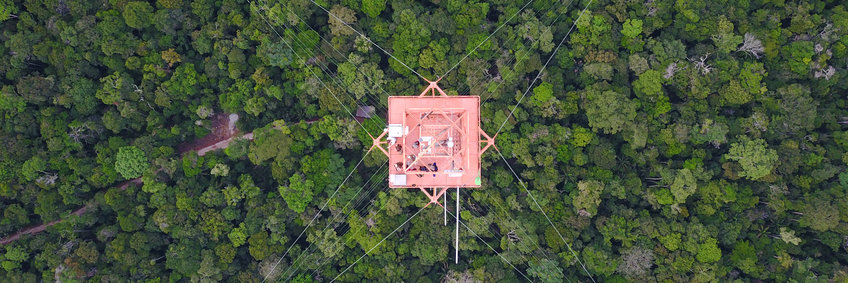
Tracing greenhouse gas cycling processes
A key aim of ATTO is to better understand how ecosystems in the Amazon influence the amount of greenhouse gases in the atmosphere. To do so we monitor the concentration of CO2, CH4 and N2O in air that has crossed over a relatively pristine area of Amazonia. Their concentrations vary with height above the ground and in time as the path taken and mixing experienced by an air parcel passing the measurement point changes. These changes in transport result in concentration variations because they control the degree to which the air being measured has been influenced by the various processes that can emit these gases or remove them from the atmosphere.
This is important because, provided the transport history is known, concentration measurements provide information about how the net balance between release and removal these greenhouse gases responds to environmental conditions. This in turn helps us to better understand how the ecosystems involved function and predict how they might influence the climate system in the future. However, concentration measurements alone do not allow us to directly investigate the underlying gross processes which drive changes in these net balances.
One approach to gathering information about the underlying processes is to augment our measurements with those of independent tracers. We aim to do just this by measuring the concentration of carbonyl sulphide and the isotopic compositions of CH4 and N2O in the air, as well as their direct exchange with different parts of the forest like leaves, stems, soils and litter. These are useful as tracers because carbonyl sulphide is closely linked to photosynthesis but not respiration, whilst, the isotopic compositions of CH4 and N2O gives us information about their production, consumption and transport within the forest.